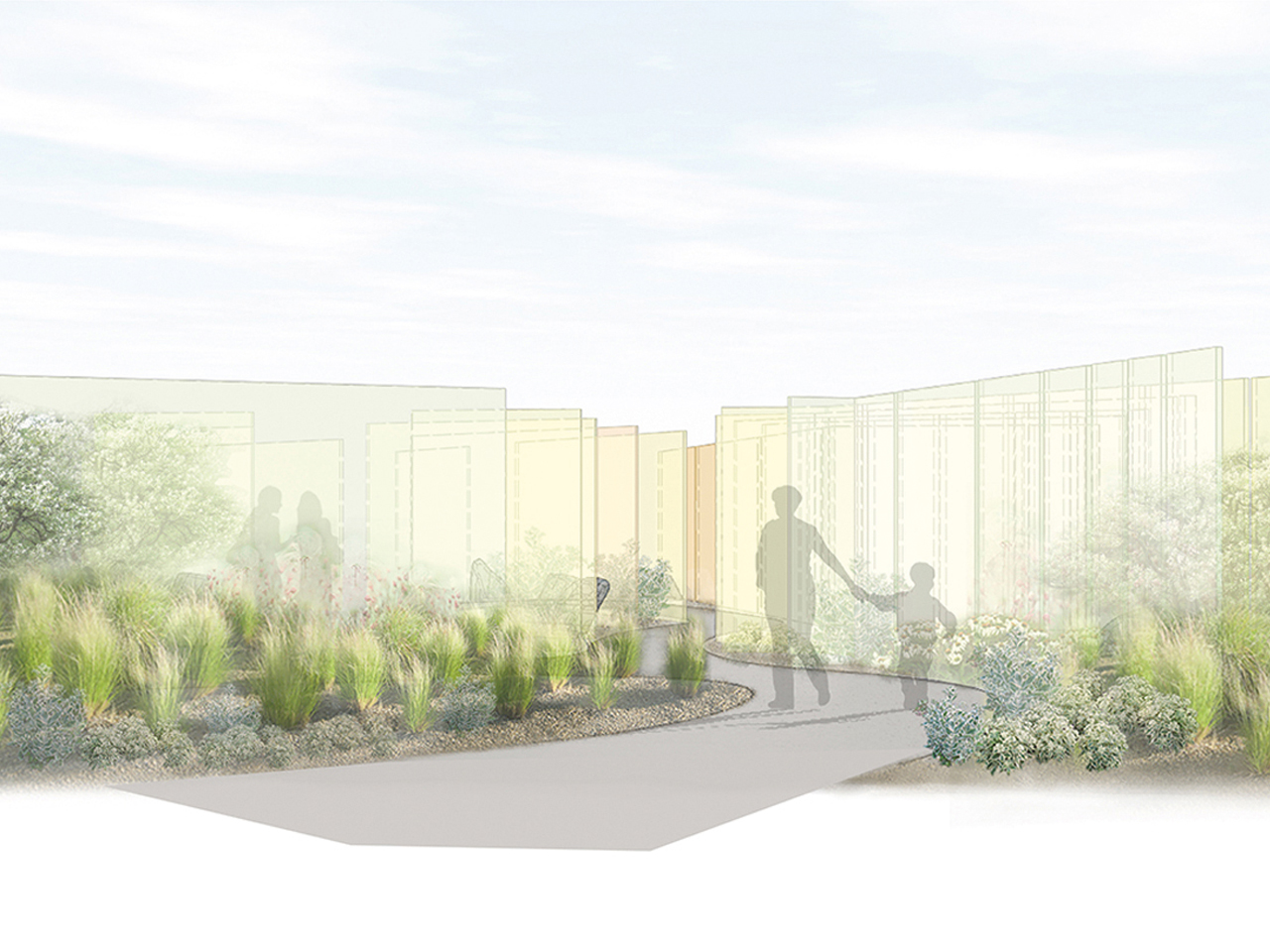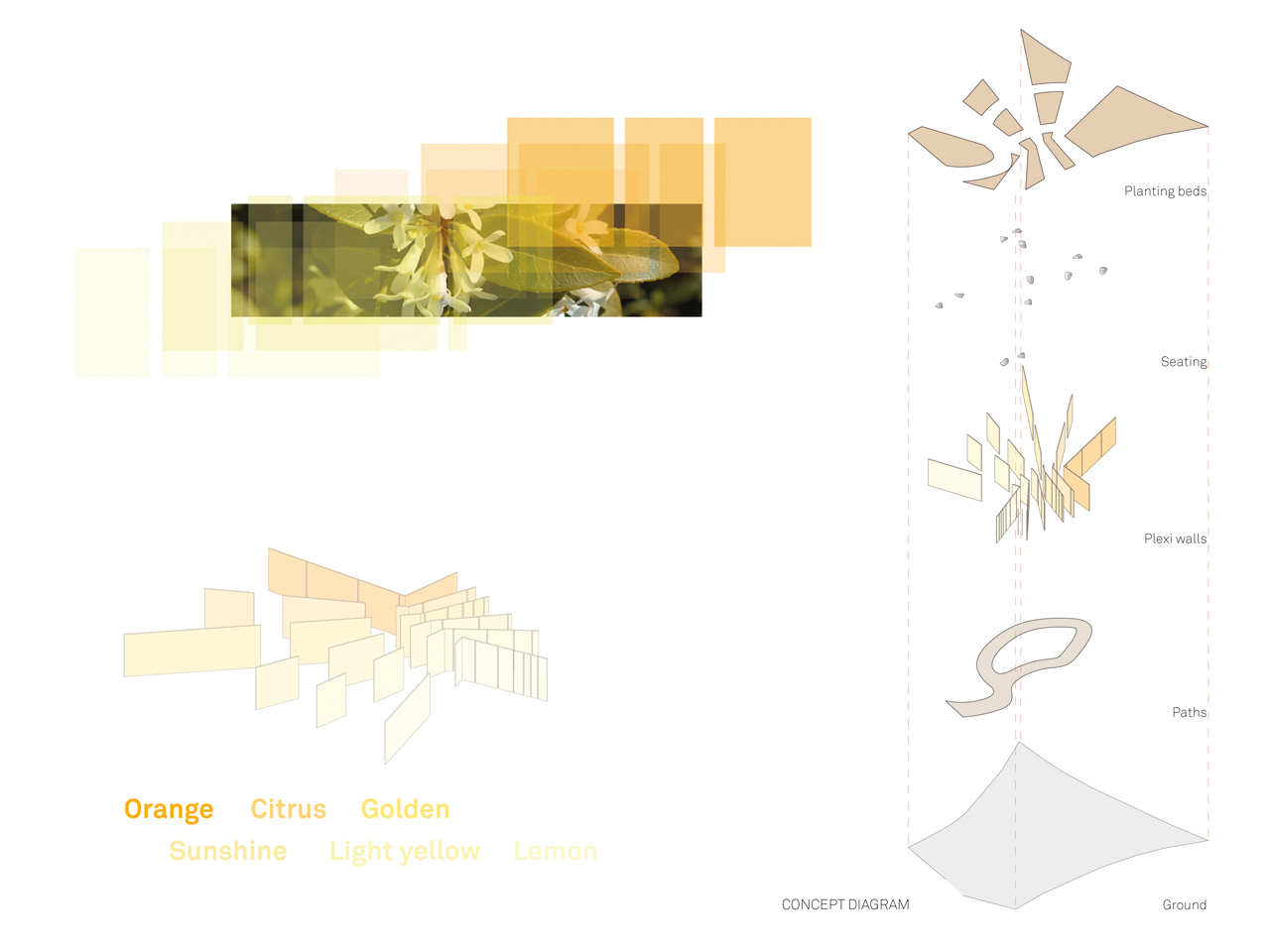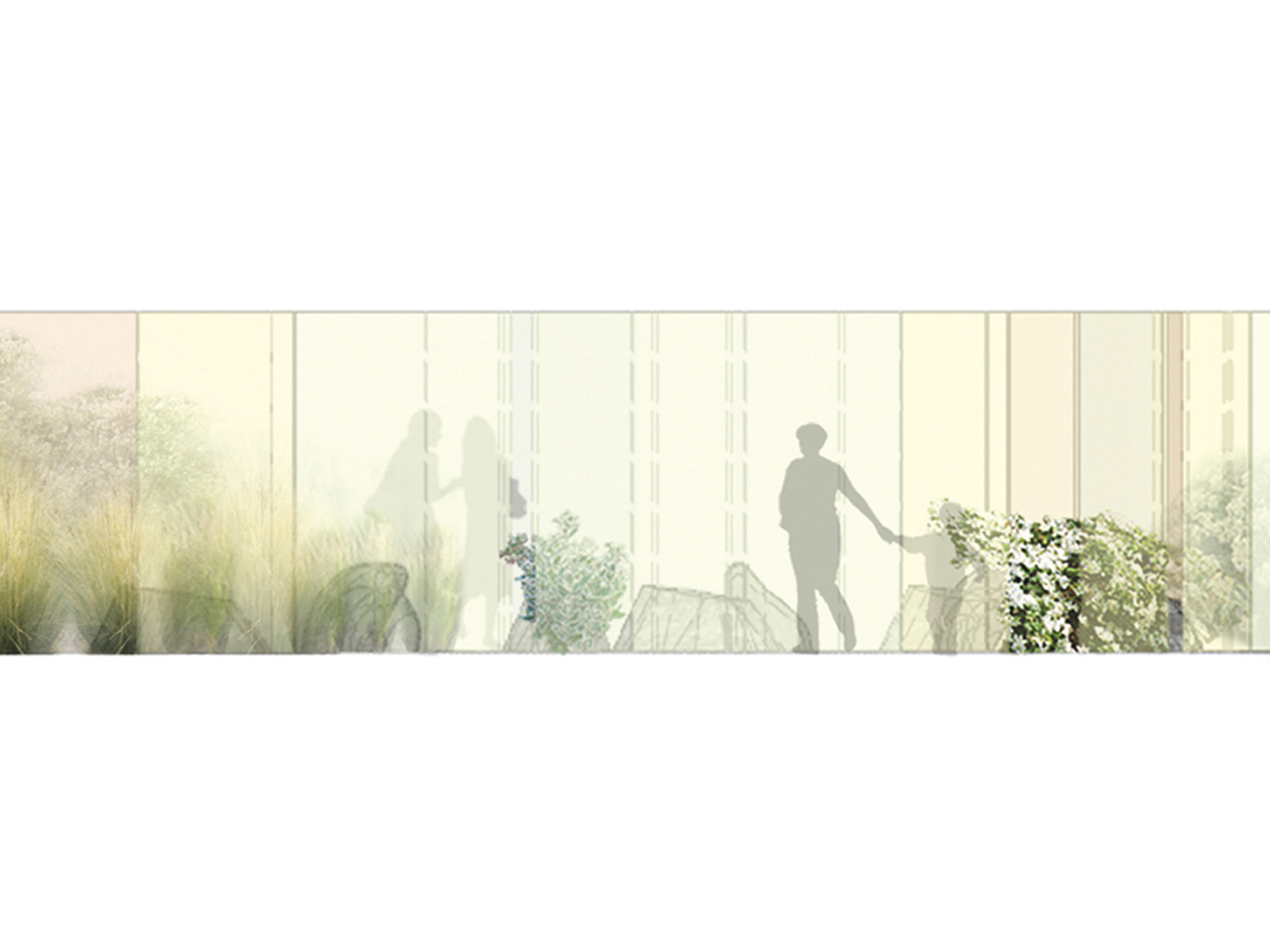THE TRANS... GARDEN
Transparent, Translucent, Transcolor, Transvisible
COMPETION ENTRY /CHAUMONT-SUR-LOIRE INTERNATIONAL LANDSCAPE FESTIVAL
SUBMISSION DATE: FALL 2015
TYPE: INSTALLATION/ LANDSCAPE
The Future
by Rainer Maria Rilke
The future:
time’s excuse to frighten us;
too vast a project,
too large a morsel for the heart’s mouth.
Future,
who won’t wait for you?
Everyone is going there.
It suffices you to deepen the absence that we are.
- Translated by A. Poulin
The trans… garden responds to the theme of ‘gardens of the coming century’ by engaging the visitors in a multi-layered experience that revolves around the themes of time, visibility and color. The garden, composed of a series of planted areas clustered in between large screens of plexiglass with color variations ranging from orange to yellow to white, frames and defines multiple glances of plants and flowers. Since our projections of imaginable futures are always conjectures at best, the trans… garden offers multiple glimpses into the gardens by alternating visibility, transparency, and color. The existence of water in different form (from rain to morning dew) will contribute to moments of translucency or opacity, creating invisible, shaded or ghosted impressions of the plants behind the screens.
This multi-layered entity, traversed by a meandering path, gives us glimpses of a perceptible garden that is not physically accessible at all times. The different colors of plexiglass screens, all variations on a range of oranges, yellows and transparent sheets, will mask a garden that is primarily planted with white flowers, grasses and shrubs. The space of the garden is composed of a meandering path, alternately packed planted areas and ‘empty’ rooms. The visitors are invited to stop, rest and contemplate the garden within these empty rooms, marveling at the sight, smelling the smells, and listening to the sounds of the garden. The openings through each screen will afford a multiplicity of different views based on the colors, and the angle of the path.
The planting areas follow the imprint of a concentric rings shaped around the center of the garden. The four concentric rings become populated with increasingly larger species of ground covers, prairie flowers and shrubs. While the primary color of most of the plants is white, there are subtle variations of color adding silver and light pink tones to the main palette. The most celebrated feature of the garden lies in the ever-changing perception of the visitor of the plants’ color and form due to the plexiglass’ color difference and the angle of the walls. The plants are selected to have distinct textures, foliage and flower forms which will create stimulating sights at the lower height planting areas and marvelous juxtapositions of form in the higher planting beds. The annuals will populate and animate the beds while some masses of ground covers, grass and shrubs anchor the garden by creating masses and waves of the same species juxtaposed to the next.


